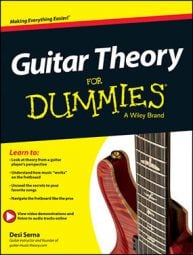Blues music on the guitar doesn’t always follow the rules of traditional music theory and harmony. Specifically, you find minor 3rds applied to major chords, and progressions that switch keys on each chord instead of staying in one parent major scale. The three main features of blues music that you hear in popular music on the guitar are
All chords with a major 3rd are treated as dominant 7th chords.
Each 7th chord is a key change — a V7 from a different key.
Minor 3rds are used over major chords.
Blues players play in both major and minor keys. In minor keys, nothing unusual happens. Depending on what the tonic chord in the progression is, blues players use a corresponding minor pentatonic scale for riffs, melodies, and lead guitar solos. Here are a few examples:
B.B. King’s “The Thrill Is Gone” is based in the key of B minor, and its chords are all drawn from the B natural minor scale. When playing this song, you can use both B minor pentatonic and full B minor scale patterns (relative minor to D major).
“Green Onions” by Booker T. & the M.G.’s is based on three chords from F minor: Fm, Bfm, and Cm. You can either play F minor pentatonic over the whole thing or follow each chord with its corresponding pentatonic, playing F minor pentatonic over Fm, Bf minor pentatonic over Bfm, and C minor pentatonic over Cm.
“Still Got the Blues” by Gary Moore has an A minor scale chord progression with an E7 chord — V7 in A harmonic minor. You have two options for playing this song. You can play A harmonic minor over the E7 and A natural minor (relative to C major) over everything else. Or you can play A minor pentatonic over the whole thing because Am is the tonic.
In these examples, the standard rules of theory and harmony apply. But most blues songs aren’t in minor keys. Instead, they’re based on dominant 7th chords and I-IV-V-type chord progressions. It’s in these situations — where blues music is based on chords with major 3rds — that the rules get broken and the blues sound is made.

